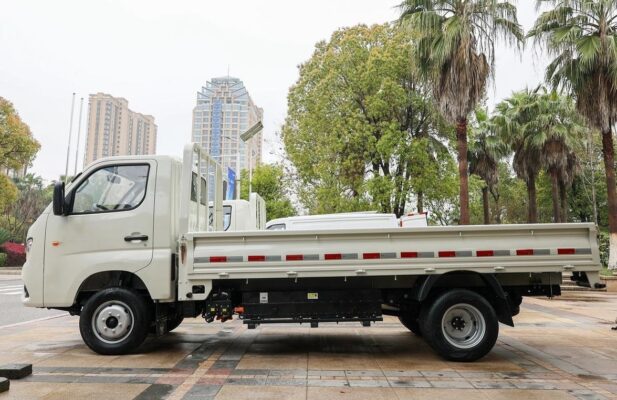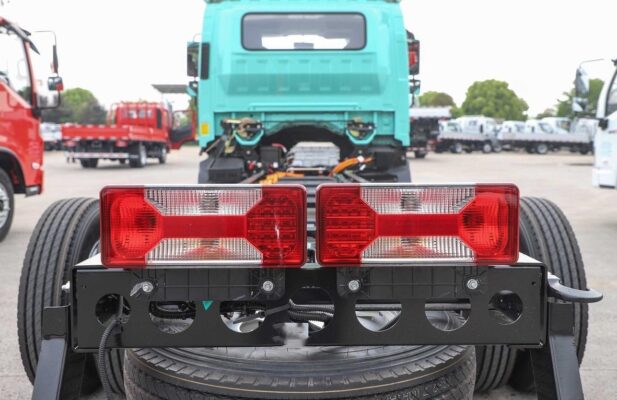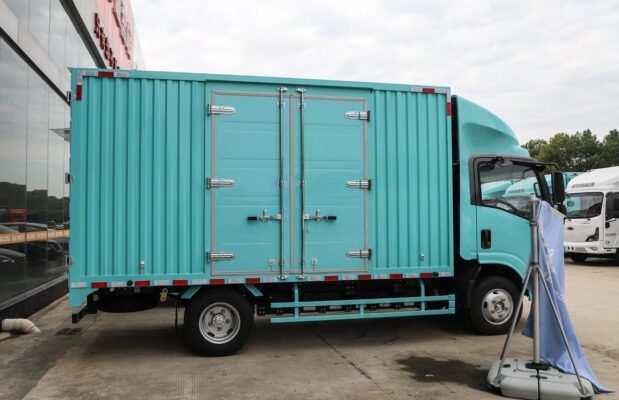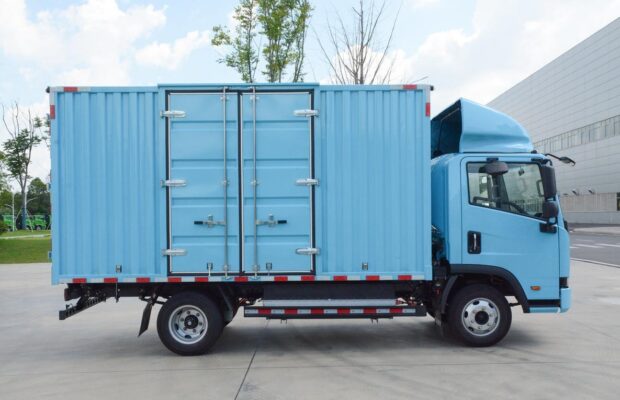Wararka Gawaarida korantada korantada
How far can the new energy electric logistics vehicle run on a single charge?
Dhajiyay ag Gawaarida korantada
In the rapidly evolving landscape of modern transportation, new energy Gaariga Logistics ee Kordhintas have emerged as a significant player, particularly in urban express delivery and logistics sectors. While they offer several advantages such as reduced emissions and lower operating costs, one of the key considerations for their practical use is the range they can achieve on a single charge. This range is crucial in determining their suitability for different applications and helps users make informed decisions about which vehicle is best suited for their specific needs.

Tamarta cusub Gaariga Logistics ee Kordhintas are indeed more suitable for urban environments where shorter distances and frequent stops are common. For intercity transportation, hase yeeshee, electric vehicles face some challenges due to the longer distances involved and the need for more frequent charging. Aad, today we will take a closer look at how far these Gaariga Logistics ee Kordhintas can run on a single charge.
It’s important to note that the concept of range can be somewhat broad, as different models of new energy Gaariga Logistics ee Kordhintas have varying cruising ranges. The range primarily depends on several factors, including the specific model, battery capacity, vehicle size, and cargo load.

For electric van models, such as the Changan V5, a lengthened small van with a total vehicle length of 4.5 mitir, the battery capacity plays a crucial role in determining its range. With a battery capacity of 48.5 kh, it can run approximately 280 kiiloomitir. Generally, van models like this will be matched with more than 35 kWh of electricity, and there is no problem achieving a range of 200 kiiloomitir.
Imagine a delivery company operating in a busy urban area. The Changan V5’s ability to cover a distance of 280 kilometers on a single charge can be extremely useful for making multiple deliveries throughout the day without the need for frequent recharging. This not only saves time but also reduces operational costs compared to traditional fuel-powered vans.

For medium-sized new energy electric vans, like those produced by Nanjing Golden Dragon, the combination of battery capacity and vehicle size impacts the range. Matched with 46 kWh of electricity and a total vehicle length of 5.3 mitir, these vans can run about 220 kiiloomitir. Hase yeeshee, when carrying one ton of cargo, the range is typically reduced to around 180 kiiloomitir. If a medium-sized van is not matched with a battery of more than 50 kh, it can be difficult to maintain a cruising range of more than 200 kiiloomitir.
Tusaale ahaan, a logistics company transporting goods within a city or between nearby towns may find a medium-sized electric van suitable for their operations. The reduced range when carrying cargo highlights the importance of considering the vehicle’s load capacity when estimating its practical range. This knowledge can help companies plan their routes and delivery schedules more effectively to ensure that they don’t run out of power mid-route.

For larger Sprinter models, such as those from Iveco, Maxus, and Yufeng Gaariga Logistics ee Kordhintas, the range is also influenced by battery capacity and vehicle characteristics. The electric Maxus EV80, for instance, is matched with 75 kWh of electricity and has a cruising range of about 230 kiiloomitir. When carrying cargo, the range is basically around 200 kiiloomitir. Intaa waxaa sii dheer, the electric Maxus logistics vehicle is only matched with fast charging and there is no slow charging option available. This means that users need to have access to appropriate fast-charging infrastructure to ensure efficient operation.
Suppose a company is using an electric Maxus EV80 for transporting larger volumes of goods. The need for fast charging piles can be a consideration in choosing the vehicle, as it requires careful planning to ensure that there are sufficient charging points along the routes or at the company’s depot. A lack of accessible fast-charging infrastructure could potentially limit the vehicle’s usability.

For 4.2-meter box-type electric freight trucks that can carry 2 tons of cargo, models such as FAW Jiefang JF6, Dongfeng Kapit, SAIC Yuejin EC series, and Dayun E3 offer different ranges depending on their battery capacities. The FAW Jiefang Gaariga Logistics ee Kordhinta is matched with 92 kWh of electricity. The cruising range under working conditions is 330 kilometers and it supports fast charging. This light Gaariga Logistics ee Kordhinta is more suitable for logistics companies that require batch vehicle use and have the ability to install charging piles on a larger scale.
Tusaale ahaan, a large logistics company with multiple delivery routes and a need for transporting heavier loads may find the FAW Jiefang electric freight truck a viable option. The relatively long range of 330 kilometers can reduce the frequency of charging stops and increase operational efficiency. Hase yeeshee, the need for fast-charging infrastructure and the consideration of batch vehicle use highlight the importance of having a comprehensive charging strategy in place.

Isu soo koobid, the current new energy Gaariga Logistics ee Kordhintas basically have a cruising range of about 200 si 300 kiiloomitir. If your daily driving mileage exceeds 300 kiiloomitir, electric vehicles may still not be able to fully meet the demand and may require charging on the way. This makes them relatively suitable for urban logistics and express delivery industries where shorter distances and more frequent stops are common. Electric medium-sized and small vans can be charged with household electricity in some cases, which makes them relatively cost-effective. Dhanka kale, vehicles like the Maxus and 4.2-meter box trucks must use fast-charging piles and are not as suitable for single-unit purchases. They are more suitable for batch purchases where companies can make efficient use of charging piles and ensure a more seamless operation.
Gunaanad, understanding the range capabilities of new energy Gaariga Logistics ee Kordhintas is essential for businesses and individuals considering their adoption. By carefully considering factors such as vehicle size, battery capacity, cargo load, and charging infrastructure availability, users can make informed decisions about which Gaariga Logistics ee Kordhinta is best suited for their specific needs. As technology continues to advance and charging infrastructure becomes more widespread, the range and usability of these vehicles are likely to improve further, making them an even more attractive option for the logistics and transportation sectors.